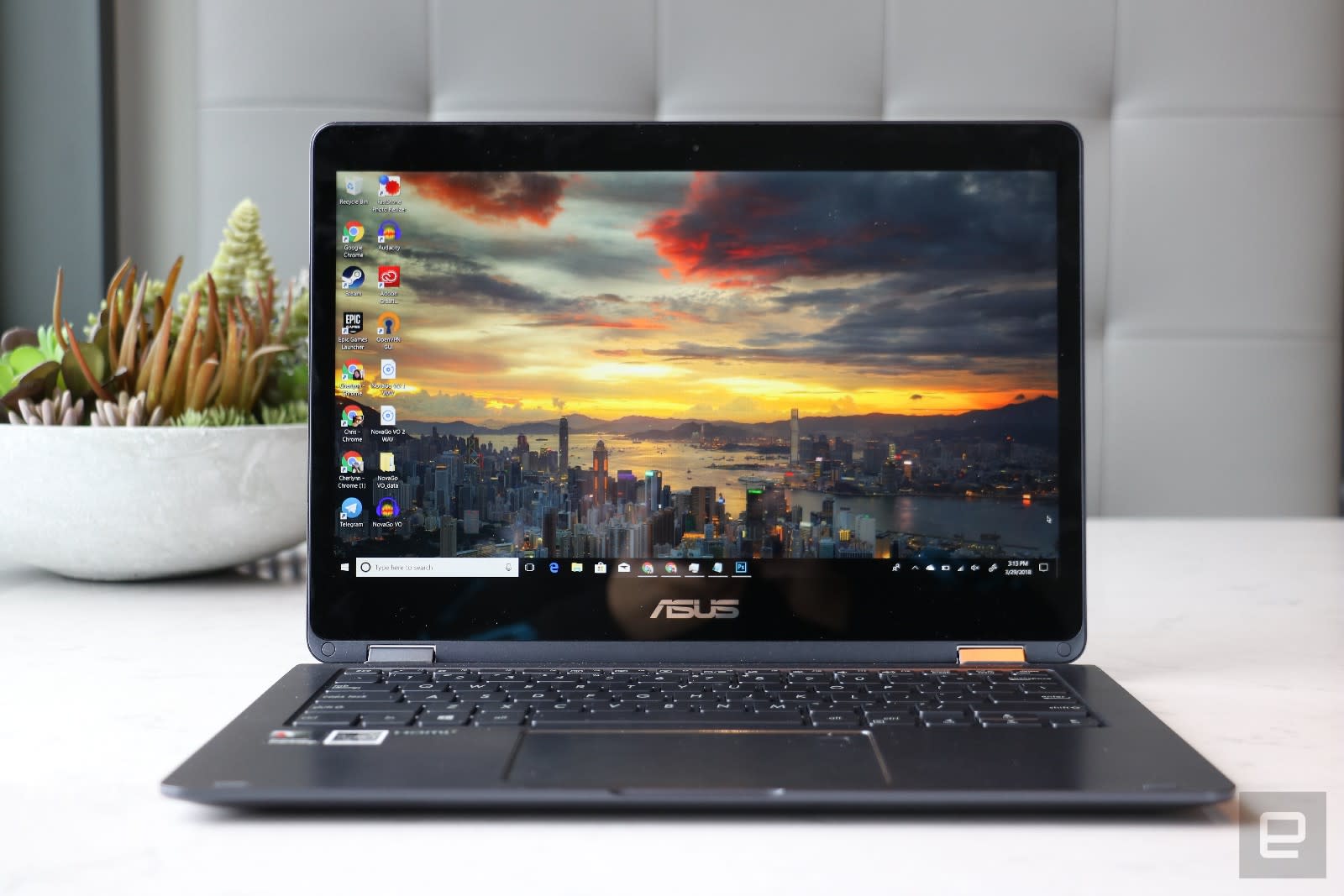“I will defend myself against these false accusations,” Tinsley said in a statement.
zGlue launches a configurable system-on-a-chip to help developers implement customized chipsets
Posted in: Today's ChiliThe complexity and cost of packing an array of sensors and power inside a small amount of space has opened the door to a wider and wider variety of use cases for internet-connected devices beyond just smart thermostats or cameras — and also exposed a hole for getting those ideas into an actual piece of hardware.
So there are some startups that are looking to address this hole by providing developers a path to creating the customized chipsets they need to power those devices. zGlue is one of those, led by former Samsung engineering director Ming Zhang and former Misfit founder Sonny Vu. The company’s chiplets are built around the kind of system-on-a-chip approach that you’ll see in most modern devices, where everything is in a single unit that reduces some of the complexity of moving processes around a larger piece of hardware — shrinking the space constraints and allowing all these actions to happen on a device, such as a smartphone. As more and more IoT devices come online, they may all have varying form factor demands, which means companies — like zGlue and others — are emerging to address those needs.
“From the developer point of view, think of us as a system that is not different from any thing else on the market, user-interface-wise,” Zhang said. “It is just smaller in size, faster in time to market, and flexible — customizable by individuals rather than just by Apple and Qualcomms. [We’re] democratizing chip innovation so it is no longer [a] privilege of Fortune 500 companies.”
The company’s first product is called the zOrigin, a “chip-stacking” product that aims to allow developers to embed the sensors and processes necessary for their devices. Stemming from an ARM 32-bit core processor (meaning it can handle more complex and precise calculations), the first launch costs $149 and can include pieces like a Bluetooth radio, accelerometers, and other necessary features.

zGlue’s chipsets have embedded memory, which is an increasingly common approach to try to reduce the number of trips going from the actual processing power to where the information is stored. Those trips cost power, speed, and can restrict the scope of use cases for internet-connected devices. Zhang said the chiplets are packaged closer together — literally reducing the space that information has to cross — in order to speed it up, though that of course carries consequences when it comes to heat constraints these processors can have.
“That’s the price to pay for the continuation of Moore’s law, as it has in the past 40 years,” Zhang said. “Heat dissipation in our system is not going to be any worse than a conventional system. In fact, with the silicon substrate in place, it’s easier to conduct heat compared to a conventional package or board substrate.”
As a kind of templated approach, zGlue is geared toward helping developers produce a custom setup that the can implement into devices that may require a wide set of sensors. The company says it looks to help developers go from a design to a prototype in a few weeks, and then reduce the turnaround time from a prototype to production in “weeks or months,” depending on the complexity and volume.
While this is one example of trying to get a prototype chip out into the wild, there are a few others as well. Si-Five, for example, offers developers a way to prototype custom silicon for their specific niches based on the hardware and IP the startup has. The goal there is to offer both a prototype flow and the ability to graduate into a production flow, allowing developers and companies to get products out the door that require custom silicon. Si-Five hardware is based on the RISC-V architecture, an open-source instruction set for silicon, and the company most recently raised $50.4 million.
Zhang, too, said RISC-V offers some potential, especially in its own scope. “RISC-V is a great tool to build small, fast, and low power IoT applications,” he said. “The nature of open source makes it more available to more people. We welcome and embrace RISC-V to join the family of ‘MCU’ chiplets supported by our technology.”
When it comes to inference — the machine learning processes that happen on the hardware to execute some kind of action, like image recognition, based on trained models — Zhang said the chipsets would support it, but he would not comment further. There is a blossoming ecosystem around custom silicon that looks to speed up inference on devices like cars or IoT devices, which is geared toward reducing the space and power constraints of those chips while also running those processes much more quickly. Companies like Mythic have raised significant venture funding in order to build that kind of hardware.
When you hear about beer vending machine BeerBox, you might wonder: Why don’t we have machines like this already?
Founder Robert Gaafar explained that there are actually several reasons why beer vending machines haven’t made sense in the past. For one thing, there’s the obvious legal necessity of ensuring that people are 21 years or older. For another, many venues won’t sell you a closed container of alcohol, because it can be used as a projectile (so you either get draft beer in a cup, or an already opened can or bottle). Plus, a normal vending machine might shake up the can too much, resulting in a foamy mess.
So BeerBox is a vending machine that opens the can for you. The company is part of the accelerator at ZX Ventures, the innovation arm of Anheuser-Busch InBev, and Gaafar said that if all goes well, BeerBox could eventually spin out as a separate company.
He added that BeerBox is meant to address “a pain that we’ve all felt” at concerts or festivals or ball games — the long lines at the bar: “It’s like, do I really want a drink? I might miss the next quarter.”
“These venues would love to sell more beer at the end of the day but they’re limited with real estate,” Gaafar said. “They can’t build more bars in the arenas, nor do they necessarily want to hire more people to staff that.”
The machine was developed in partnership with Intelligent Product Solutions. Ralph Cassara, the company’s senior director of architecture and embedded software, explained that the can-opening functionality represents even more of a “unique technical challenge” than you might think.
One aspect was simply studying how your fingers open a can of beer and figuring out how to replicate that mechanically. But Cassara also noted that the cans can be loaded into BeerBox top-first or bottom-first, so the machine needs to detect the can’s orientation, and then locate the tab at the top of the can.
And where another beer vending startup called Civic is focused on using blockchain to solve the age verification issue, Gaafar said that’s addressable with human checks — just put the BeerBox (or, eventually, multiple BeerBoxes) in an area that’s only accessible to guests who’ve shown their ID.
The current BeerBox prototype can hold 150 25-ounce cans of beer (though Gaafar said that will end up going down to 110 cans as the machine is redesigned for airflow). Payments are cashless, but the company is also planning new models that support secure, offline payments. And while the prototype we saw only dispensed Bud Light, he said it eventually will include a touchscreen for ordering multiple types of beer.
In the meantime, you’ll be able to see the BeerBox at select concert and sports venues this summer.
 Newest details leaked on the Galaxy Note 9 suggest we’re already nearly on the money for Samsung’s biggest phone of the year. This device isn’t going to be more of a Silver Surfer than it is a Galactus. This is the herald of things to come. For some of the more hardcore buy-all-Samsung users, this might be an unwelcome revelation. … Continue reading
Newest details leaked on the Galaxy Note 9 suggest we’re already nearly on the money for Samsung’s biggest phone of the year. This device isn’t going to be more of a Silver Surfer than it is a Galactus. This is the herald of things to come. For some of the more hardcore buy-all-Samsung users, this might be an unwelcome revelation. … Continue reading![]()
 Google plans to change how it flags secure sites in Chrome, retiring its “Secure” indicator in favor of highlighting which pages don’t support HTTPS. The decision, which will take affect in a later release of Chrome, flips the current system on its head. “Users should expect that the web is safe by default,” Emily Schechter, Product Manager of Chrome Security, … Continue reading
Google plans to change how it flags secure sites in Chrome, retiring its “Secure” indicator in favor of highlighting which pages don’t support HTTPS. The decision, which will take affect in a later release of Chrome, flips the current system on its head. “Users should expect that the web is safe by default,” Emily Schechter, Product Manager of Chrome Security, … Continue reading![]()
 Xbox One’s May update is here, and it’s arriving with a handful of exciting features. Discord is actually taking center stage with this update, and though the app itself isn’t available on Xbox One just yet, this does allow for some degree of integration. Once you’ve applied the May update, you’ll be able to link your Discord and Xbox accounts, … Continue reading
Xbox One’s May update is here, and it’s arriving with a handful of exciting features. Discord is actually taking center stage with this update, and though the app itself isn’t available on Xbox One just yet, this does allow for some degree of integration. Once you’ve applied the May update, you’ll be able to link your Discord and Xbox accounts, … Continue reading![]()
 The iPad Pro and Apple Pencil are arguably the best tablet + stylus pairing currently available. When used with a good note-taking app, the slate is revolutionary in educational settings, opening the door for natural handwritten notes paired with features not possible with pen and paper. The best hardware in the world, though, would be wasted on a low-quality note-taking … Continue reading
The iPad Pro and Apple Pencil are arguably the best tablet + stylus pairing currently available. When used with a good note-taking app, the slate is revolutionary in educational settings, opening the door for natural handwritten notes paired with features not possible with pen and paper. The best hardware in the world, though, would be wasted on a low-quality note-taking … Continue reading![]()
 The best thing about Qualcomm and Microsoft’s “Always Connected PC” platform is the promise of being online anywhere, anytime. But that can also come at a cost — data isn’t free. That is, until now. Sprint is offering free unlimited 4G LTE to anyone…
The best thing about Qualcomm and Microsoft’s “Always Connected PC” platform is the promise of being online anywhere, anytime. But that can also come at a cost — data isn’t free. That is, until now. Sprint is offering free unlimited 4G LTE to anyone…
 President Trump has been angry at Amazon for some time now. He has said that the company and others like it are a bad deal for the US Postal Service. After these remarks, the White House convened a task force to take a closer look at the USPS and its…
President Trump has been angry at Amazon for some time now. He has said that the company and others like it are a bad deal for the US Postal Service. After these remarks, the White House convened a task force to take a closer look at the USPS and its…

